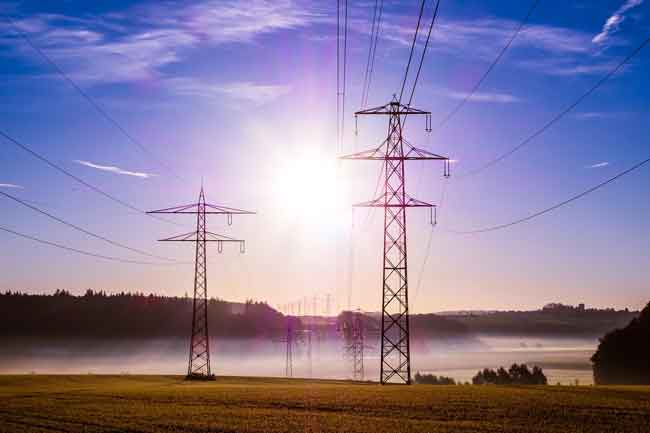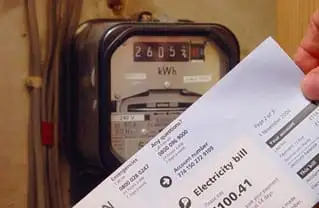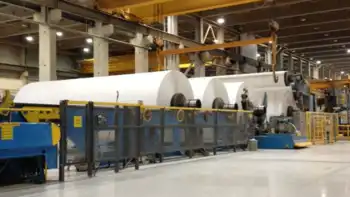Nova Scotia Power Active Demand Control Tariff lets the utility direct Port Hawkesbury Paper load, enabling demand response, efficiency, and industrial electricity rates, while regulators assess impacts on ratepayers, grid reliability, mill viability, and savings.
Key Points
A four-year tariff letting the utility control the mill load for demand response, efficiency, and lower costs.
✅ Utility can increase or reduce daily consumption at the mill
✅ Projected savings of $10M annually for other ratepayers to 2023
✅ Regulators reviewing cost allocation, monitoring, and viability
Nova Scotia Power is scheduled to appear before government regulators Tuesday morning seeking approval for a unique discount rate for its largest customer.
Under the four-year plan, Nova Scotia Power would control the supply of electricity to Port Hawkesbury Paper, a move referenced in a grid operations report that urges changes, with the right to direct the company to increase or reduce daily consumption throughout the year.
The rate proposal is supported by the mill, which says it needs to lower its power bill to keep its operation viable.
The rate went into effect on Jan. 1 on a temporary basis, pending the outcome of a hearing this week before the Nova Scotia Utility and Review Board, amid broader calls for an independent body to lead electricity planning.
The mill accounts for 10 per cent of the provincial electricity load, even as a neighbouring utility pursues more Quebec power for the region, producing glossy paper used in magazines and catalogs.
Nova Scotia Power says controlling how much electricity the mill uses — and when — will allow it to operate the system much more efficiently, as it expands biomass generation initiatives, saving other customers $10 million a year until the rate expires in 2023.
Ceding control 'not an easy decision'
In its opening statement that was filed in advance, Port Hawkesbury Paper said ceding the control of its electrical supply to Nova Scotia Power was "not an easy decision" to make, but the company is confident the arrangement will work.
In September 2019, Nova Scotia Power and the mill jointly applied for an "extra large active demand control tariff," which would provide electricity to the mill for about $61 per megawatt hour, well below the full cost of generating the electricity.
The utility said "fully allocating costs" would result in "prices in excess of $80/MWh ... and [would] not [be] financially viable for the mill."
In its statement, Port Hawkesbury Paper said since the initial filing "there have been greater near term declines in market demand and pricing for PHP's product than was forecast at that time, continuing to put pressure on our business and further highlighting the need to maintain the balance provided for in the new tariff."
Consumer advocate sees 'advantage,' but will challenge
Bill Mahody represents Nova Scotia Power's 400,000 residential customers before the review board. He wants proof the mill will pay enough toward the cost of generating the electricity it uses, amid concerns over biomass use in the province today.
"We filed evidence, as have others involved in the proceeding, that would call into question whether or not the rate design is capturing all of those costs and that will be a significant issue before the board," Mahody said.
Still, he sees value in the proposal.
The proposed new rate went into effect on Jan. 1 on a temporary basis. (The Canadian Press)
"This proposed rate gives Nova Scotia Power the ability to control that sizable Port Hawkesbury Paper load to the advantage of other ratepayers, as the province pursues more wind and solar projects, because Nova Scotia Power would be reducing the costs that other ratepayers are going to face," he said.
Mahody is also calling for a mechanism to monitor whether the mill's position actually improves to the point where it could pay higher rates.
"An awful lot can change during a four-year period, with new tidal power projects underway, and I think the board ought to have the ability to check in on this and make sure that their preferential rate continues to be justified," he said.
Major employer
Port Hawkesbury Paper, owned by Stern Partners in Vancouver, has received discounted power rates since it bought the idled mill in 2012. But the "load retention tariff" as it was called, expired at the end of 2019.
Regulators have accepted Nova Scotia Power's argument that it would cost other customers more if the mill ceased to operate.
The mill said it spends between $235 million and $265 million annually, employing 330 people directly and supporting 500 other jobs indirectly.
The Nova Scotia government pledged $124 million in financial assistance as part of the reopening in 2012.
Related News












